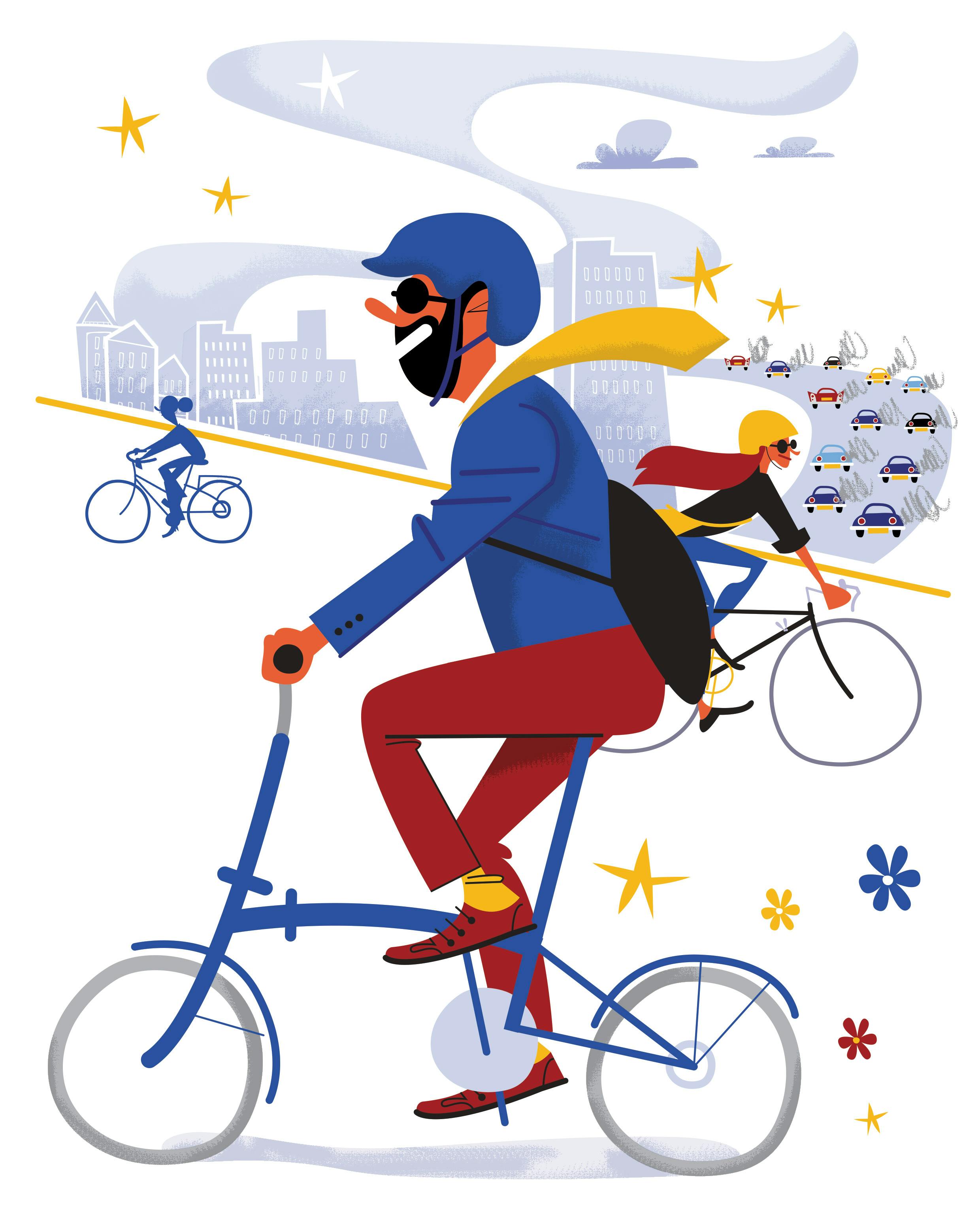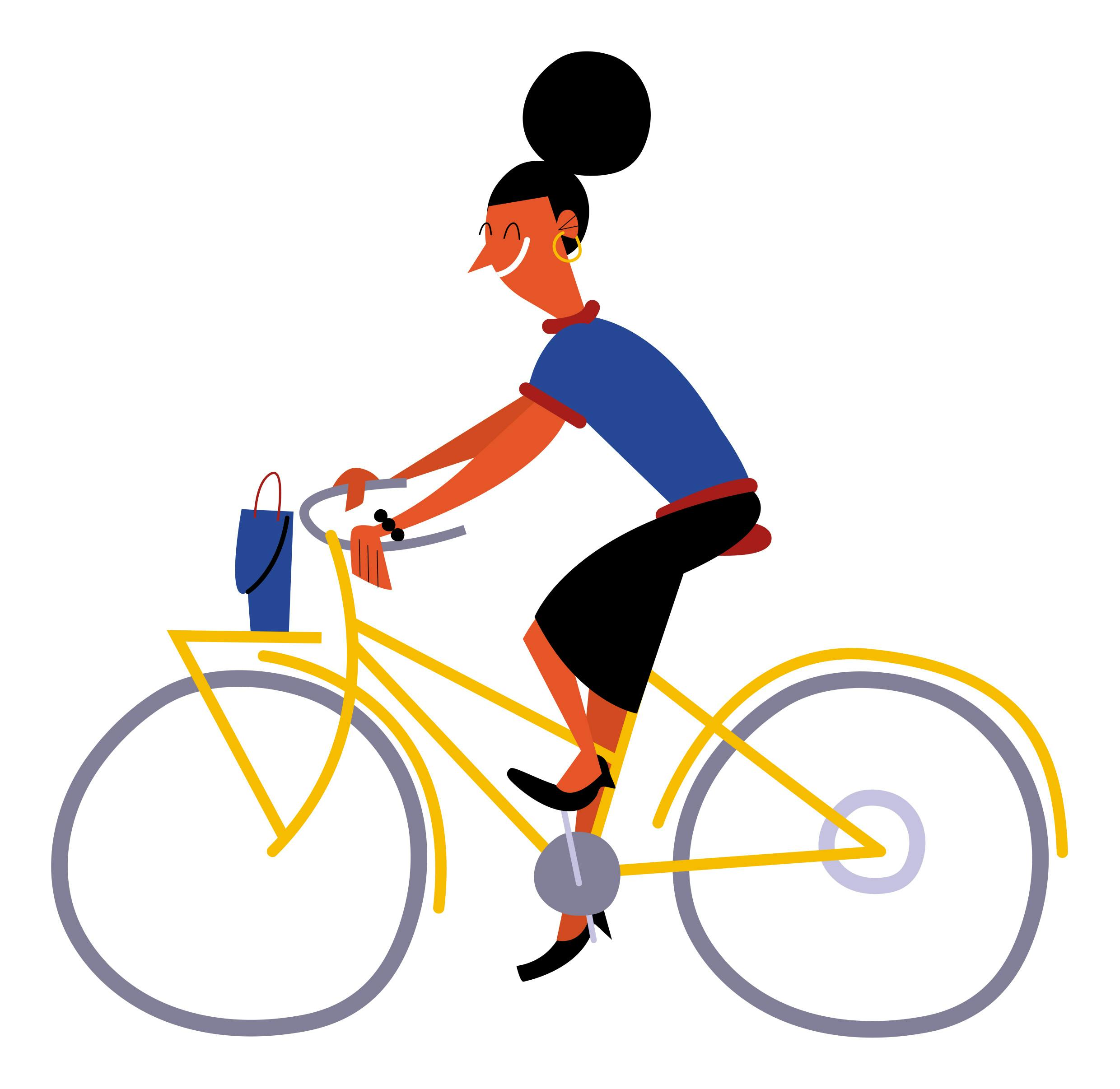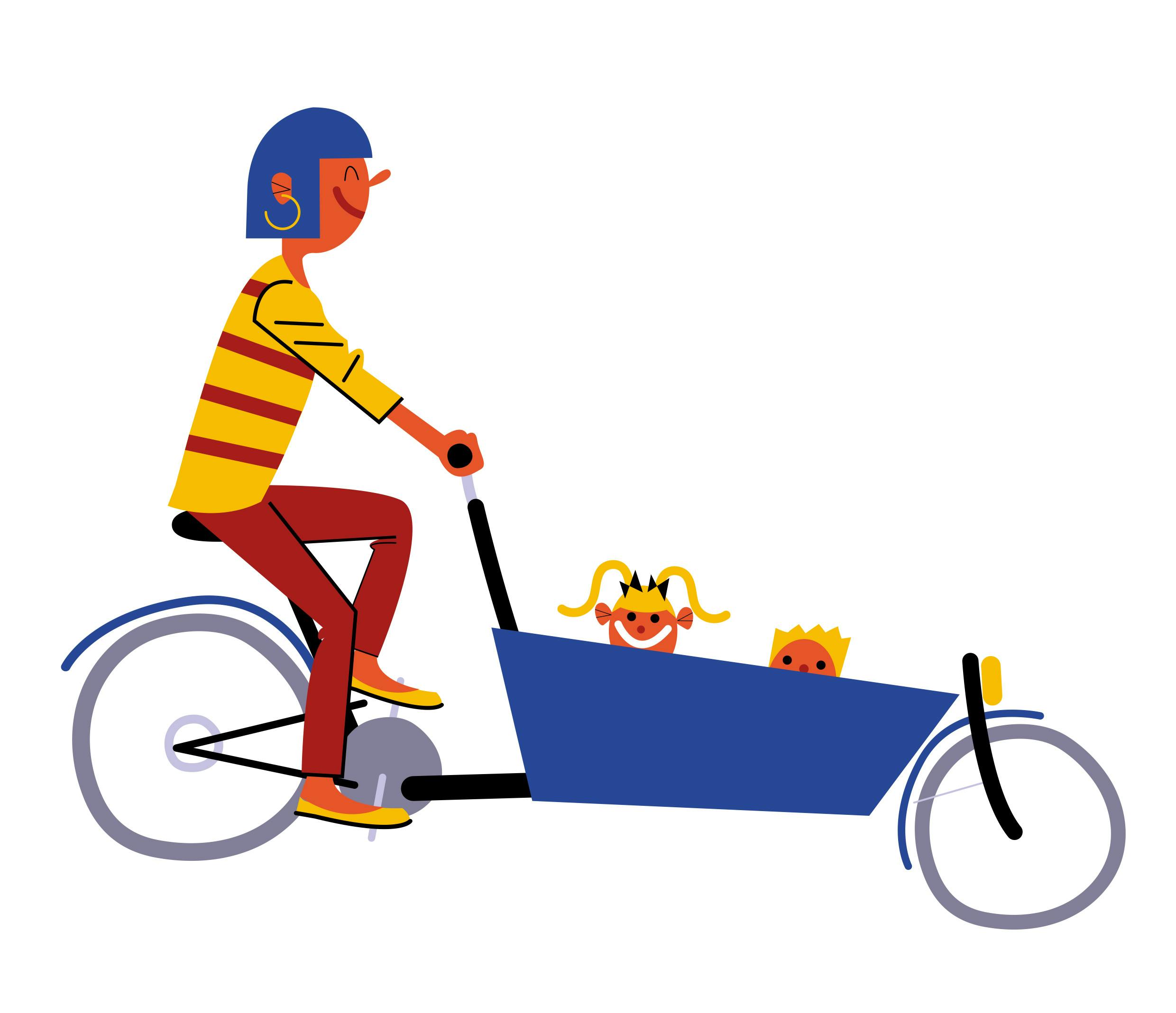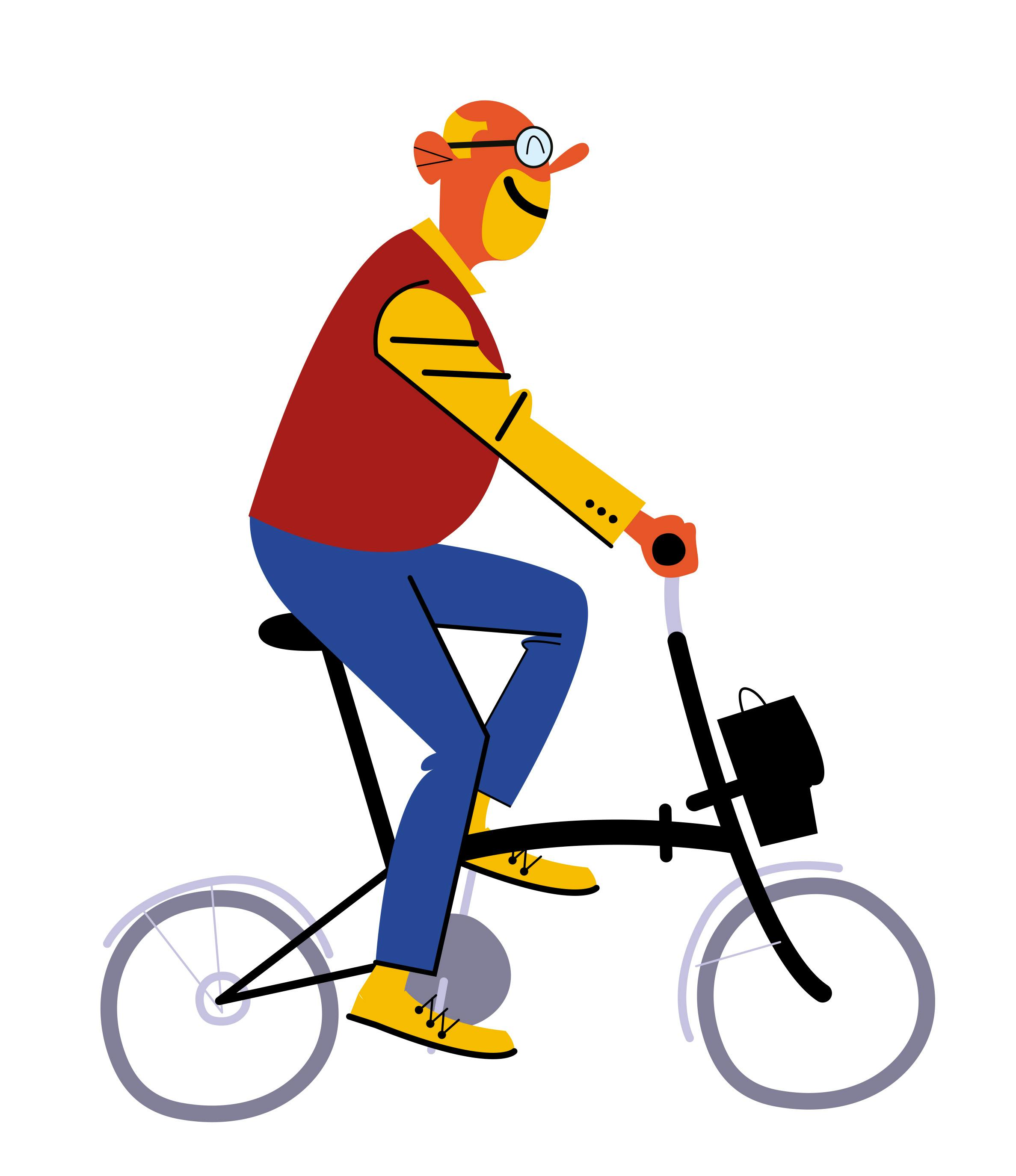New Cities, New Challenges
As in many cities in northern Europe since decades ago, bicycles seem to be a more constant presence nowadays. As other objects, a bicycle says something about who we are, leaving clues about our way of life and expectations. But cities talk even more, because they talk about people as a community.

Text: Alfonso Borges
Illustrations: Pip Claffey
Today’s cities are adapted to a 20th century reality that seems to no longer be considering human or sustainability needs. However, cities seem to be facing new challenges, from bike sharing systems to the growth of electric bicycles, creating an opportunity for change in their structures and inhabits. It becomes fundamental to understand these challenges in order to make a change in a positive way.
Bicycles and cities
It seems impossible to analyse the function of objects without questioning human nature, because without humans they do not exist or make sense. In the same way, what makes us human is the fact that we have objects, how the world of humans consists of things. And those objects talk. The same way Pompeii’s artefacts allowed us to understand life in the first century, our everyday objects help to understand how we live today. Every object tells a story. More than just fulfilling a function, our choices reflect how we see ourselves and how we want to project ourself to others. A bike is that kind of object.
Part of its magic seems to be its democratic character and because it’s so easy to get a bike, they seem to have the power to dilute the differences and labelling, hopefully, more effectively than cars. Bicycles reflect all eras, but they also contribute to its definition, suggesting how we can live individually and collectively at the same time. They can represent a non-polluting and less sedentary society and, as an object that has evolved unaltered in its fundamental structure, memory and culture.
The relationship between bicycles and people may help to explain how we relate with each other. Hu Weiwei, one of Mobike founders, states that the territory is now defined by cities. Most cities are built for cars to be the main transportation. Symbols of modernity such as the linear structured streets and the waiting at traffic lights, all seems to have been designed to accelerated movement. The car is so important that most people choose it even to travel short distances.
Weiwei reflects on how China was a bike kingdom, but in just two decades, cities became completely dominated by cars. The same thing happened in many European cities and today we may be trying to tread the opposite route. The bicycle used to be the means of transport for most workers in industrial societies. With development and modernity, the sedentary lifestyle and search for the most direct comfort, bicycles has almost disappeared.

Even with the recent increase of its use, the term boom may be exaggerated. In countries with cycling tradition, such as the United Kingdom, according to Peter Walker on The Guardian, only 3% of the population use bicycles as a everyday transport. In more peripheral countries such as Portugal, where the excitement of novelty and some investment seem to mix with the unpreparedness of cities, the presence is even more insignificant.
Today, the act of riding a bicycle as transport involves a number of difficulties, with fear being the most significant. If the goal of improving cities is to get as many people on bicycles as possible, it makes sense to remove difficulties and not to create new barriers. The requirement for insurance, for instance, is interpreted by Walker as one such case, ignoring the danger aspect associated with cycling in traffic. He considers it a non-issue because bikes do not provoke significant harm. The definition to which it would apply would be complicated because it is not the absence of insurance that reduces accidents or improves the behaviour in traffic, as can be seen by the 86% of drivers who do not comply with speed limits. Nor the absence of insurance frees from responsibility.
The use of helmet is a similar source of disagreement. Even accepting the arguments of those who, for safety’s reasons, advocate compulsory insurance and helmet, what does not seem to make sense is to create barriers to something that is generally positive. Although the territory in which bicycles are found are porely regulated and blur, most cities can be attractive and liberating when explored pedaling. Greater results will eventually require a greater organisation, but also adjustment of rules and structure, offering a city for all.
Although the problems are similar, each city is different, changing the context for bikes. The same road bike, the same object, is understood differently in Amsterdam, London, Berlin or Lisbon. And that understanding is absolutely decisive in the way they are seen and accepted. In London bikes are a vulgar presence, particularly associated with a trendy scene and way of life, with bike coffee shops and meeting places, but not as a main means of transport.
In the Netherlands bicycles dominate urban mobility. They are so common that it makes no sense to have bike cafés or events. A bicycle is a tool that everyone uses, so it doesn’t characterise you the same way. There are no cyclists, there are people, and they all cycle. Particularly in Amsterdam, the use of bicycles seems to be essentially seen as a way of transport. Mikael Colville-Andersen, founder of the Cycle Chic blog, considers that there is no bike culture, there are people going from A to B, which emphasises the functional character of the bicycle as a tool. It’s largely true, bicycles became so common that they don’t affect the people uses them. In these cities there’s no wear of specific clothes for cycling, people dress as well, or badly, as they would when not riding a bike. That is why Chic also belongs to bicycles. It belongs to people. This frees it from the notion of cyclists as a specific gender. They are just people, and these people ride bicycles.

But this perspectives also carries a danger – the devaluation of emotional connection. Rob Walker, consumer critic, reflects how, if the hurricane is coming and we have to run out, the objects with sentimental value are the ones we take with us. If we consider that there is a growing tendency to replace objects that still work and not to repair the ones that break down, the life of bicycles may tend to be shortened by the non-existence of emotional connection.
Fortunately, as it becomes obvious in Cycling Chic, not only does Chic matter, as there is a full awareness of bicycle’s participation in our personal image, it has become an object that is chosen also for its character, like a piece of clothing. If it resists the pressure of fashion renewal, this enhanced connection between the bike and its owner becomes a quality that allow the object to last.
New challenges, new cities
Today’s cities are facing changes, new challenges, in some cases radical ones. One that may not only affect the cities, but also the way people see bicycles, is the growth of bicycle sharing systems. The business potential is so high, that Mobike, for example, employs around 300 people just to meet demands from cities worldwide. Some argue that bike sharing can play a key role in combating environmental degradation caused by traffic pollution and congestion. According to Beatrice Leanza, Mobike describes itself as an agent of urban change. Based on the data provided by the GPS integrated in their bicycles, they can help to develope urban planning by understanding the movements before defining paths. Such as when a path in a Japanese garden is defined by the circulation of people, before it is paved.

However, particularly because of its dockless character which exploits the real potential of bicycles to move us from door to door, these companies seem to have led to the invasion of pavements by thousands of bicycles, undermining the acceptance. While the principle of sharing is positive and in theory could reduce the number of bicycles and provide vehicles for occasional users, the scale and model of the businesses seems to contribute to the lack of connection between the person and object. It is more than a subject of matter, a link which becomes essential to make any object last longer. The absence of emotional connection, the fact that they belong to an entity that is abstract, exposes them to vandalism and robberies. Three out of the four bike sharing companies that operated in London have withdrawn from the city. In addition, shared bikes seem to have been developed in a “one fits all” sense that is poorly suited for today’s needs. People do not move alike.
Tiffany Lam summarises how the choices and combination of transport varies with age, gender, occupation, income levels and individual wishes. Although automatic gearboxes and airless tires may serve people’s needs, this approach ignores individual wishes, serving everyone and no one. Besides, such perspective tends to contradict the trend in 21st century industries towards customisation, eventually confusing democratisation and homogenisation.
Only something that is unique, like a sticker glued on or because it was built specifically for you, may truly provide a more complete and enduring experience. Rapid evolution of the technologies that support electric bicycles, particularly the increase in the autonomy, also created new challenges.
According to Daniel Boffey, in the Netherlands, where around one million bicycles are sold per year, more than two thirds of sales in 2018 were spent in electric models, increasing the average price per equipment from 734 eur in 2011 to 1.207 eur in 2018. This brings new safety issues, with faster, heavier bikes and less experienced commuters, but especially new structural needs for charging sites.

Change for the better
These challenges are pushing cities to a point where change becomes necessary and almost inevitable. If change happens it becomes possible to do so in a positive way, not for bikes, but for everyone, eliminating barriers and improving acceptance. The first point in any city change refers to structure. Cities like Amsterdam and Copenhagen have structures that other cities only can dream of. Structure is fundamental in supporting an idea, but the creation of similar structures in other cities may not be enough.
In the Netherlands, a flat country, according to RAI Vereniging’s Floris Liebrand interview to Boffey, about 60% of the people live within 15km of their workplace. If people are driven from the city to the periphery to make room for tourist accommodation, cycling lanes become of little use. If cycling lanes are built and not maintained or kept free of parking, they are just wasted resources exempting cyclists from complying with rules. Moreover, some of the corridors built for cycling assume a principle of segregation, of exclusion from the streets, which remain as speed tracks for cars. A corner for bicycles, ignoring principles of integration and arising the notion of the danger of commuting by bike. In fact, car drivers, in which most cyclists are included, just adapt to what the structures afford, allow and invite.
Change may not imply radical intervention on existing structures, it may well mean gradually improving them. There is a basic concept in the case of Oslo, which seems to demonstrate that part of the effort is not dependent on structural change, but on an idea. Even if major adjustments are necessary, the simple elimination of parking seems to have generated radical changes in the city. The functioning of the idea depends on the improvement of some structures, coordination with car parks and public transport, but such changes can be made gradually, the idea is not dependent on radical structural changes, but on the existing streets. The initiative may have been politically radical and have generate some resistance and notion of car bullying, but it’s been structurally evolutionary being under permanent analysis. Lan Marie Nguyen Berg enlighten Athlyn Cathcart-Keays that bullying is not the objective, but that cars feel like visitors, not owners of the spaces.
Tiffany Lam defends how gender can also be a key factor. According to her research, women report greater anguish at aggressive drivers, lorries, buses, bike theft and even harassment, in cities that are poorly adjusted to a more accurate perception of danger. That perception may contribute to the fact that in most cities only a small percentage of regular cyclists are women: 25% in Barcelona, 29% in San Francisco, 37% in London. In most cities, even decisions made considering the opinion of bicycle users loose any reliability, because the average is flawed. In Copenhagen, where more than 50% of cyclists are women, there are around 675,000 bikes compared to 120,000 cars, according to Arte TV’s investigation.
This makes it clear how the reduction of danger, and its perception, may be a key factor for the increase of cycling in everyday lives, achieving more sustainable cities.

Lam refers how 49% of Londoners believe that cycling is not for “people like me”. With the exception of a few cities, those who cycle are considered cyclists, a gender reduced to a stereotype of behaviour that is entrenched. Laura Laker noted how this became absolutely clear when an English minister sent a letter about non-compliance with the rules to cyclists associations. Not only did he assume that cyclists were a corporation represented by corporative associations, he related bikes with the high percentage of accidents, a myth belied by the available data 0.12% of fatalities in bicycle accidents, despite their extreme fragility.
But there is no such thing as cyclists, there is people who cycle, drive or take the train, bus or tram, depending on the journey.
During the generations in which bicycles have practically disappeared, we haven’t seen pictures of people ordinarily dressed on a bike, just lycra. The popularisation of bicycles and the normalisation of clothing or accessories associated can help in one of the key points to reduce conflicts and increase acceptance: blurring of the notion of cyclist as a kind. Between the strangeness generated by the photography that gave rise to the blog Cicle Chic, of a young woman on a bicycle in a skirt and with a chic bag, to the total normalisation and rejection of functional clothes and helmets, there seems to be a much wider universe, freeing the notion of cyclist as an homogenous group. Such acceptance is fundamental to make clear that change is not made for the few, but for all.
Big cities live in constant change. But this era in which cities are under especially high pressure may be the perfect moment for a positive change, bringing cities closer to people. That change may depend on structures, that are not expendable, but much more work has to be done. Political decision towards more sustainable cities, progress in gender issues, improvement in the danger aspect and acceptance through the dilution of the notion of cyclists as a group.